Résultats de recherche de titre
Articles 1500481 à 1500500 sur 1501850
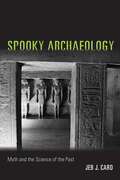
Spooky Archaeology: Myth and the Science of the Past
Par Jeb J. Card. 2018
Outside of scientific journals, archaeologists are depicted as searching for lost cities and mystical artifacts in news reports, television, video…
games, and movies like Indiana Jones or The Mummy. This fantastical image has little to do with day-to-day science, yet it is deeply connected to why people are fascinated by the ancient past. By exploring the development of archaeology, this book helps us understand what archaeology is and why it matters.In Spooky Archaeology author Jeb J. Card follows a trail of clues left by adventurers and professional archaeologists that guides the reader through haunted museums, mysterious hieroglyphic inscriptions, fragments of a lost continent that never existed, and deep into an investigation of magic and murder. Card unveils how and why archaeology continues to mystify and why there is an ongoing fascination with exotic artifacts and eerie practices.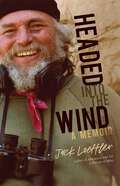
Headed into the Wind: A Memoir
Par Jack Loeffler. 2019
With the temperament of Santa Claus and the tenacity of a badger, Jack Loeffler reveals his compassion and concern for…
Southwestern traditional cultures and their respective habitats in the wake of Manifest Destiny. Working both as an individual and with comrades—including Edward Abbey and Gary Snyder—he was part of an early coterie of counterculturalists and environmentalists who fought to thwart the plunder of natural resources in the Southwest. Loeffler, a former jazz musician, fire lookout, museum curator, bioregionalist, and self-taught aural historian, shares his humor and imagination, his adventures, observations, reflections, and meditations along the trail in his retelling of a life well lived. In this honest memoir, he advises each and every one of us to go skinny-dipping joyfully in the flow of Nature to better understand where we&’re headed.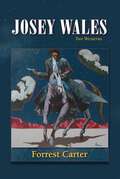
Josey Wales: Two Westerns : Gone to Texas; The Vengeance Trail of Josey Wales
Par Forrest Carter. 1973
Josey Wales was the most wanted man in Texas. His wife and child had been lost to pre-civil War destruction…
and, like Jesse James and other young farmers, he joined the guerrilla soldiers of Missouri--men with no cause but survival and no purpose but revenge. Josey Wales and his Cherokee friend, Lone Watie, set out for the West through the dangerous Camanchero territory. Hiding by day, traveling by night, they are joined by an Indian woman named Little Moonlight, and rescue an old woman and her granddaughter from their besieged wagon. The five of them travel toward Texas and win through brash and honest violence, a chance for a new way of life.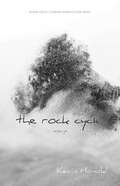
The Rock Cycle: Essays (River Teeth Literary Nonfiction Prize Series)
Par Kevin Honold. 2021
The past is a living thing, palpable as the weather. In this collection of essays, Kevin Honold explores themes of…
history and its fading significance in modern American life. &“Remembrance is morbid, unprofitable,&” he writes. &“It&’s impractical, impolite in certain company.&” These words remind us that maintaining a sense of the historical past is crucial to maintaining one&’s humanity in the face of our often dehumanizing political and economic systems. The Rock Cycle delves into memory and into the spaces of history, especially the deserts of the American Southwest. This landscape provides a stage, stripped of all distraction, where a person comes face to face with themselves. With contemplations on religions, philosophies, works of literature, and the land, Honold examines what it means to be oneself within the world.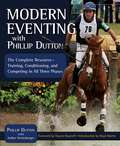
Modern Eventing with Phillip Dutton
Par Phillip Dutton. 2013
This fabulously illustrated book covers training, conditioning, and competing in all three phases of events: dressage, cross-country, and show jumping.…
In addition, Dutton includes full chapters describing the special needs of the event horse, with tips and advice from the top experts who make up his internationally respected eventing team—his groom, his farrier, and his veterinarian. You'll find guidance in everything from daily maintenance to braiding and turnout, and from hoof care and studs to common health issues and vet box care of your horse during competitions.With tips for finding the right event prospect, whatever your level of experience, as well as Dutton's own schooling exercises, both on the flat and over fences, the book promises to give you the leg up you need for a safe and confident start in the sport.Everything You Need to Excel in Eventing including:Tack & EquipmentFinding the Right HorsePutting Together an Eventing TeamHorse & Rider FitnessBasic Dressage SchoolingCross-Country: No FencesCross-Country JumpingIntroduction to Show JumpingMental Preparation for Horse & RiderWarming Up for Each PhaseRiding the Dressage TestWalking the Cross-Country CoursePlanning the Show Jumping RoundStaying Clear and Making TimeGrooming, Braiding, & Quarter MarksFeeding the Working AthleteHoof Maintenance, Shoes, & StudsCommon Health ProblemsCare of the Event Horse During CompetitionAnd So Much More!Includes 11 of Phillip's Personal Jumping Exercises!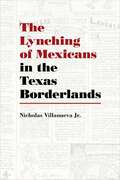
The Lynching of Mexicans in the Texas Borderlands
Par Nicholas Villanueva Jr.. 2017
More than just a civil war, the Mexican Revolution in 1910 triggered hostilities along the border between Mexico and the…
United States. In particular, the decade following the revolution saw a dramatic rise in the lynching of ethnic Mexicans in Texas. This book argues that ethnic and racial tension brought on by the fighting in the borderland made Anglo-Texans feel justified in their violent actions against Mexicans. They were able to use the legal system to their advantage, and their actions often went unpunished. Villanueva&’s work further differentiates the borderland lynching of ethnic Mexicans from the Southern lynching of African Americans by asserting that the former was about citizenship and sovereignty, as many victims&’ families had resources to investigate the crimes and thereby place the incidents on an international stage.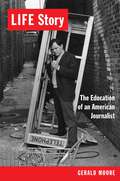
LIFE Story: The Education of an American Journalist
Par Gerald Moore. 2016
Before Americans got their news from television, they got it from LIFE, the weekly magazine that set the standard for…
photojournalism. In LIFE Story Gerald Moore—a writer and editor who worked at the magazine in the last glory years before TV made it obsolete—recalls the dizzying excitement and glamour of LIFE&’s fast-moving, powerful approach to spreading the news. Moore covered the major stories of the late 1960s and early 1970s: LSD, assassinations, the 1968 Democratic convention in Chicago, the McCarthy campaign, urban riots, the My Lai massacre, and the beginnings of feminism. Before joining LIFE at the age of twenty-seven, he worked as a police officer in Albuquerque and then a reporter at the Albuquerque Tribune—both jobs teaching him the tools of his trade. His story offers a wonderful look back at the good and the bad old days of journalism.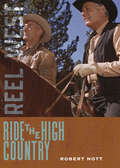
Ride the High Country (Reel West Series)
Par Robert Nott. 2024
Director Sam Peckinpah was just starting out when MGM released Ride the High Country in 1962. He was a new…
kind of director: young, brash, and in a hurry to help the Western grow up by treating it with adult themes. Ride the High Country was something new and different, a changing Western to match a changing West. Stars Randolph Scott and Joel McCrea were old hands at this sort of thing. Ride the High Country gave the two veteran actors one last job to do and a chance to go out with some dignity.Ride the High Country helped the genre mature and adapt to turbulent, changing times. It launched Peckinpah's career by invoking the themes of honor, loyalty, and compromised ideals, the destruction of the West and its heroes, and the difficulty of doing right in an unjust world--themes developed to their pinnacle in Peckinpah's later masterpiece, The Wild Bunch.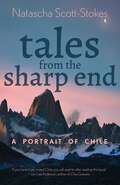
Tales from the Sharp End: A Portrait of Chile
Par Natascha Scott-Stokes. 2024
Tales from the Sharp End: A Portrait of Chile is based on fifteen years of Natascha Scott-Stokes living and exploring…
the country of Chile. The book offers a vivid tapestry of stories ranging from history and culture to flora and fauna, woven into the author’s own tales of adventure and heartbreak.Chile is 4,300 kilometers long but a mere 350 kilometers at its widest, lined by the Andes to the east and the Pacific to the west. Traveling along the Pan-American Highway takes you to both the driest desert on earth and impenetrable cloud forests barring the way to Patagonian ice fields. Here is the true magnet of this jagged knife-edge of a country: the unique landscape born of its geography and the gorgeous plant and animal life there. Few things are more thrilling than climbing the coastal mountains to see both the Andes and the ocean at the same time, or to set eyes on the mighty River Baker churning through southern Patagonia.Natascha Scott-Stokes offers both a love letter to Chile and a heartfelt lament for a country living at the sharp end of human folly and climate change.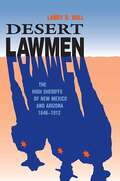
Desert Lawmen: The High Sheriffs of New Mexico and Arizona Territories, 1846-1912
Par Larry D. Ball. 1992
Elected for two-year terms, frontier sheriffs were the principal peace-keepers in counties that were often larger than New England states.…
As officers of the court, they defended settlers and protected their property from the ever-present violence on the frontier. Their duties ranged from tracking down stagecoach robbers and serving court warrants to locking up drunks and quelling domestic disputes.The reality of their job embraced such mandane duties as being jail keepers, tax collectors, quarantine inspectors, court-appointed executioners, and dogcatchers.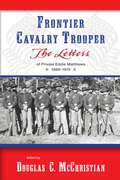
Frontier Cavalry Trooper: The Letters of Private Eddie Matthews, 1869–1874
Par Douglas C. McChristian. 2012
During his five years in the army, Private Edward L. Matthews wrote a series of exceptionally detailed and engaging letters…
to his family back home in Maryland describing his life in the Arizona and New Mexico Territories. Eddie Matthews&’s letters, published here for the first time, provide an unparalleled chronicle of one soldier&’s experiences in garrison and in the field in the post–Civil War Southwest.Eddie&’s letters record a vivid chronicle of day-to-day life in the frontier regulars. Included are operational details in his company, candid observations of people and places, intimate views of frontier society, and personal opinions that probably would have been forgotten or moderated had he recorded his experiences later in life. More subtle are his valuable references to the state of transportation and communication in the Southwest during the early 1870s. Matthews probably did not realize until later years that he was not only a witness to the nation&’s rapid westward expansion, but was himself a tiny cog in the machinery that made it possible.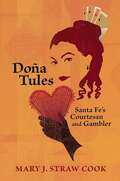
Doña Tules: Santa Fe's Courtesan and Gambler
Par Mary J. Straw Cook. 2007
Gertrudis Barceló was born at the turn of the nineteenth century in the Bavispe valley of east central Sonora, Mexico.…
Young Gertrudis, who would later achieve fame under the name &“Tules,&” discovered how to manipulate men, reading their body language and analyzing their gambling habits. This power, coupled with a strong-willed and enterprising nature, led Doña Tules to her legendary role as a shrewd and notorious gambling queen and astute businesswoman. Throughout the 1830s and 1840s, her monte dealings and entertainment houses became legendary throughout the southern Rocky Mountain region.Doña Tules&’s daring behavior attracted the condemnation of many puritanical Anglo travelers along the Santa Fe Trail. Demonized by later historians, Doña Tules has predominately been portrayed as little more than a caricature of an Old West madam and cardsharp, eluding serious historical study until now. Mary J. Straw Cook sifts through the notoriety to illustrate the significant role Doña Tules played in New Mexico history as the American era was about to begin.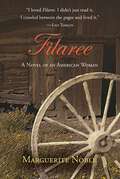
Filaree: A Novel of an American Woman
Par Marguerite Noble. 1979
This moving novel of pioneer life in Arizona has become a classic. Based on the life of the author's mother,…
it overturns every stereotype of western womanhood. Comes closer to the truth and the validity of the so-called winning of the West than anything I have ever read. It is terrifying, heartbreaking and remarkable. . . . Filaree is also one of the most magnificent portraits of a woman that exists in our literature.--Howard Fast I loved Filaree, I didn't just read it, I crawled between the pages and lived it.--Lily TomlinAn extraordinary performance. . . . a powerful antidote to the romantic illusions some people have about ranch people and life on the range. . . . As a writer, Mrs. Noble makes no compromises. She tells her story in plain country American dialect, offers no exaggerated sex or violence, no vulgar talk. She is a realist in the best sense, a breath of fresh air in these free-wheeling times.--C. L. Sonnichsen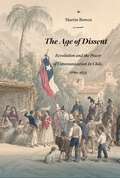
The Age of Dissent argues that the defining feature of the Age of Revolutions in Latin America was the emergence…
of dissent as an inescapable component of political life. While contestation and seditious ideas had always been present in the region, never before had local regimes been forced to consider radical dissension as an unavoidable dimension of politics. Focusing on urban Chile between the first anticolonial conspiracy of 1780 and the consolidation of an authoritarian regime in 1833, the book argues that this revolution was caused by how people practiced communication and framed its power.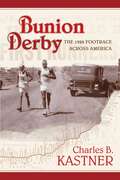
Bunion Derby: The 1928 Footrace Across America
Par Charles B. Kastner. 2007
On March 4, 1928, 199 men lined up in Los Angeles, California, to participate in a 3,400-mile transcontinental footrace to…
New York City. The Bunion Derby, as the press dubbed the event, was the brainchild of sports promoter Charles C. Pyle. He promised a $25,000 grand prize and claimed the competition would immortalize U.S. Highway Route 66, a 2,400-mile road, mostly unpaved, that subjected the runners to mountains, deserts, mud, and sandstorms, from Los Angeles to Chicago. The runners represented all walks of American life from immigrants to millionaires, with a peppering of star international athletes included by Pyle for publicity purposes. For eighty-four days, the men participated in this part footrace and part Hollywood production that incorporated a road show featuring football legend Red Grange, food concessions, vaudeville acts, sideshows, a portable radio station, and the world's largest coffeepot sponsored by Maxwell House serving ninety gallons of coffee a day.Drawn by hopes for a better future and dreams of fame, fortune, and glory, the bunioneers embarked on an exhaustive and grueling journey that would challenge their physical and psychological endurance to the fullest while Pyle struggled to keep his cross-country road show afloat.In a wild grab for glory, a cast of nobodies saw hope in the dust: blacks who escaped the poverty and terror of the Old South; first-generation immigrants with their mother tongue thick on their lips; Midwest farm boys with leather-brown tans. These men were the 'shadow runners' men without fame, wealth, or sponsors, who came to Los Angeles to face the world's greatest runners and race walkers. This was a formidable field of past Olympic champions and professional racers that should have discouraged sane men from thinking they could win a transcontinental race to New York. Yet they came, flouting the odds. Charley Pyle's offer Of free food and lodging to anyone who would take up the challenge opened the race to men of limited means. For some, it was a cry from the psyche of no-longer-young men, seeking a last grasp at greatness or a summons to do the impossible. This pulled men on the wrong side of thirty from blue-collar jobs and families.--from the PrefaceNo writer 'owns' a swath of history the way Chuck Kastner 'owns' the wildly crazy C. C. Pyle Bunion Derbies. The inaugural race was a truly American epic: from its massive scope to the fact that it was dominated by a handful of second-rate runners who decided there was no future in continuing in the underdog role. Chuck's book makes you want to schedule your next vacation for Route 66, there to relive the zaniness and heroics of 1928.--Rich Benyo, editor, Marathon & Beyond MagazineBunion Derby's narrative arc transcends the academic approach one would expect from a university press.--Philip Damon, on the Peace Corps Writers website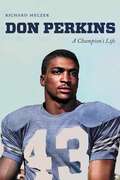
Don Perkins: A Champion's Life
Par Richard Melzer. 2020
Don Perkins led a life as one of the most honored athletes in the history of the University of New…
Mexico and the Dallas Cowboys. But Perkins&’s life was far more complex and, at times, controversial. He experienced the traumas of racial discrimination, death, divorce, football-related injuries, and a never-ending search for his own identity. In his search, Perkins ventured into sportscasting, public speaking, community relations, big-rig trucking, government work, and even amateur theater, where he portrayed Frederick Douglass and other famous Black leaders. Through it all, he remained a kind, unassuming, charismatic man, universally admired by family members, friends, and millions of fans. Don Perkins: A Champion&’s Life is the final tribute he so richly deserves.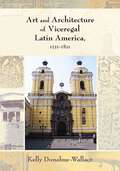
Art and Architecture of Viceregal Latin America, 1521-1821 (Diálogos Series)
Par Kelly Donahue-Wallace. 2008
Kelly Donahue-Wallace surveys the art and architecture created in the Spanish Viceroyalties of New Spain, Peru, New Granada, and La…
Plata from the time of the conquest to the independence era. Emphasizing the viceregal capitals and their social, economic, religious, and political contexts, the author offers a chronological review of the major objects and monuments of the colonial era. In order to present fundamental differences between the early and later colonial periods, works are offered chronologically and separated by medium - painting, urban planning, religious architecture, and secular art - so the aspects of production, purpose, and response associated with each work are given full attention. Primary documents, including wills, diaries, and guild records are placed throughout the text to provide a deeper appreciation of the contexts in which the objects were made.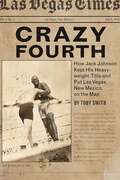
In 1912 boxing was as popular a spectator sport in the United States as baseball, if not more so. It…
was also rife with corruption and surrounded by gambling, drinking, and prostitution, so much so that many cities and states passed laws to control it. But not in New Mexico. It was the perfect venue for one of the biggest, loudest, most rambunctious heavyweight championship bouts ever seen. In Crazy Fourth Toby Smith tells the story of how the African American boxer Jack Johnson—the bombastic and larger-than-life reigning world heavyweight champion—met Jim Flynn on the fourth of July in Las Vegas, New Mexico. The civic boosters, bursting with pride in their town, raised a hundred thousand dollars for the fight, pushing events like the sinking of the Titanic to the back pages of every newspaper. In the end, once the dust finally settled on the whole unseemly spectacle, Las Vegas would spend the next generation making good on its losses.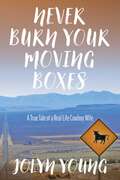
Never Burn Your Moving Boxes
Par Jolyn Young. 2023
A young woman's struggle with marriage and motherhood on some of the most remote ranches in the American West.Jolyn Young…
grew up in the &“real&” northern California—the forgotten area at the tip-top of the state with small towns, extreme poverty, and about 40 miles to the Oregonian mountains. In a childhood defined by a subdivision, she decided she wanted to be a cowboy, and two years out of college, she saw that dream through, taking a job at a Nevada ranch in the search for a lifestyle subsisting of horses, cattle, and the wide open range.Falling in love was never part of the plan.Jim Young was tall, strong, and could ride a bronc and rope a steer like no one's business. And before she knew it Jolyn found her cowboyin' dreams overtaken by a new and intoxicating cowboy reality. With long days side by side in the saddle, nights sharing a bedroll, and the deep satisfaction that came with hard physical work in a place filled with natural beauty, it seemed life was all a strong-willed young woman might want it to be.But when a baby-to-be suddenly spun her wild romance into a very practical marriage, and one decrepit ranch trailer home led to the next, Jolyn found her young family desperately seeking stability in what is by definition a transient lifestyle that moves with the seasons. Often hours from the nearest grocery store and half-a-day from the closest hospital, pregnancy, childbirth, and illness required a do-it-yourself mentality. With days, sometimes weeks on her own as Jim worked the farthest reaches of whatever ranchlands they currently called home—and first with one child to care for—and eventually with three—Jolyn fought profound loneliness, finding comfort in writing and company in her camera.As the cowboy lifestyle pulled them further toward the brink of civilization and Jim's drinking became a liability, losing him jobs and sending them packing, again, to yet another, different, distant cow camp, Jolyn struggled with the knowledge that she was choosing a life of scrubbing filthy mobile home floors and bunkhouse bathrooms in order to keep her family together. It would take leaving it, and Jim, for her to determine whether a world built on risk could coexist with the responsible mother she had needed to become.With a memoir that is brave, honest, and heartbreakingly funny, Jolyn Young has written the story of every young adventure-seeker, every new mother, and every partner who has loved an alcoholic in a whole new light—that of a campfire, on the edge of the desert night, miles away from cell phone reception.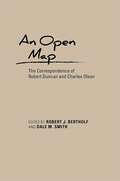
An Open Map: The Correspondence of Robert Duncan and Charles Olson (Recencies Series: Research and Recovery in Twentieth-Century American Poetics)
Par Robert J. Bertholf and Dale M. Smith. 2017
The correspondence of Robert Duncan and Charles Olson is one of the foundational literary exchanges of twentieth-century American poetry. The…
130 letters collected in this volume begin in 1947 just after the two poets first meet in Berkeley, California, and continue to Olson&’s death in January 1970. Both men initiated a novel stance toward poetry, and they matched each other with huge accomplishments, an enquiring, declarative intelligence, wide-ranging interests in history and occult literature, and the urgent demand to be a poet. More than a literary correspondence, An Open Map gives insight into an essential period of poetic advancement in cultural history.